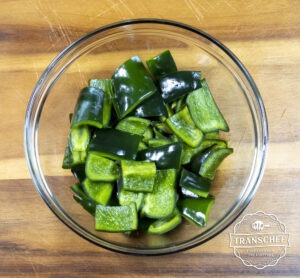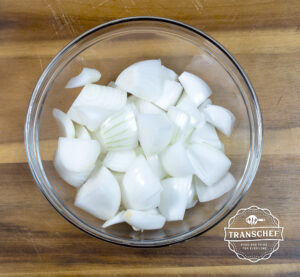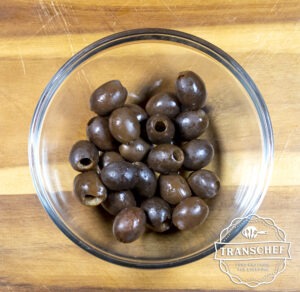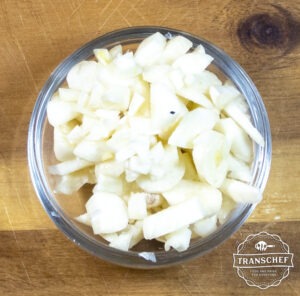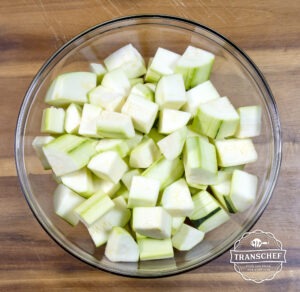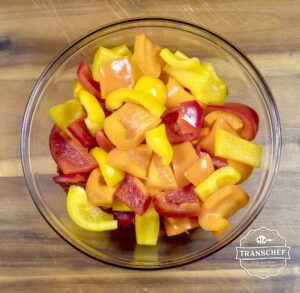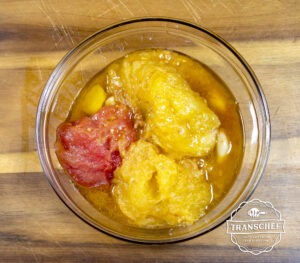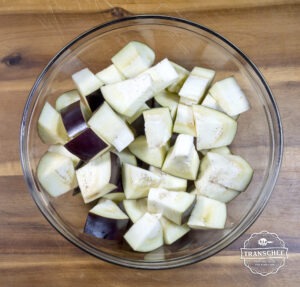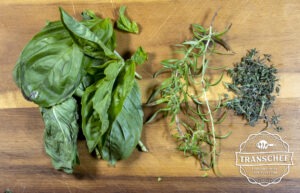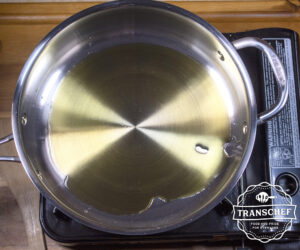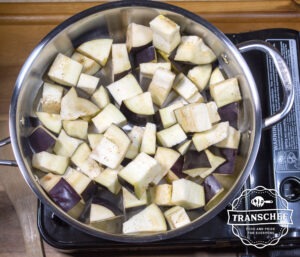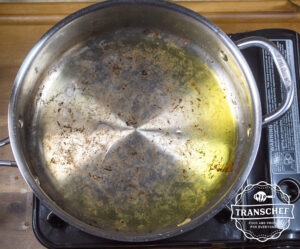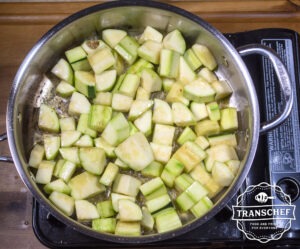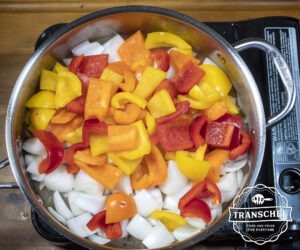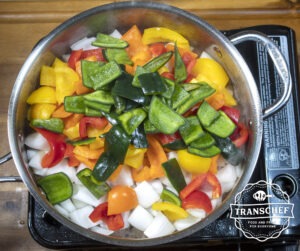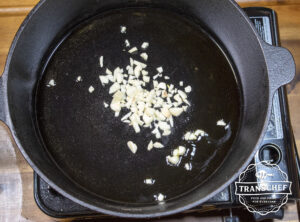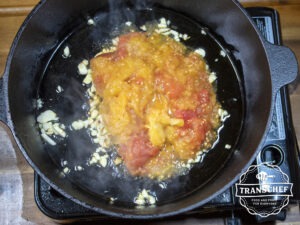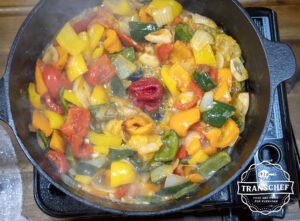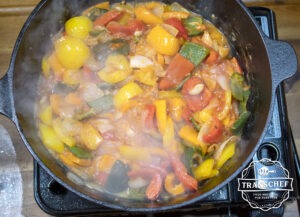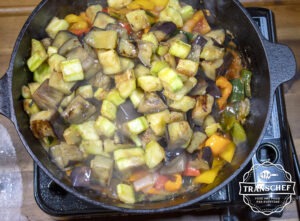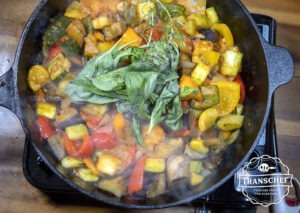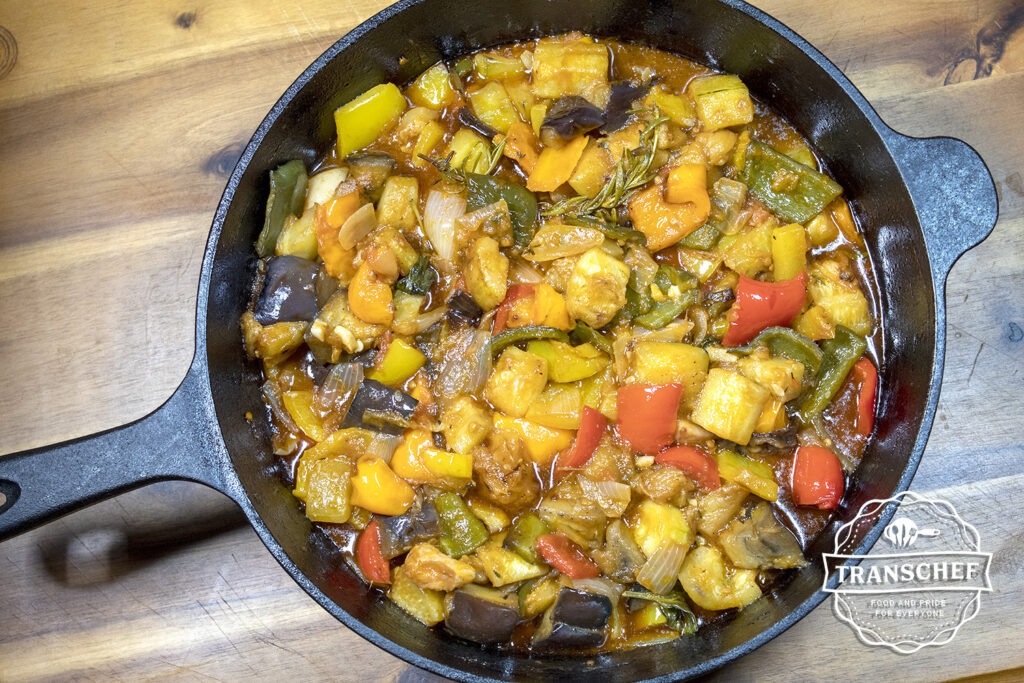
Ratatouille
Ratatouille is one of those country dishes that, despite its simple ingredients and appearance, is surprisingly complex to produce well. If you’re not careful it can easily turn into a watery/oily bowl of mushy vegetables. Something no one ever wants! However, with a couple simple little steps you’ll be well on your way to mastering not only ratatouille, but a whole world of wonderfully exciting veggie dishes that will keep your family coming back for MORE!
Looking back ratatouille was not a dish I remember anyone every mentioning outside of cooking school. Even then it was basically a bowl of non-descript veggies floating in an oily broth. Which is really kind of sad because that area of the country grew some really amazing produce during those times. Sadly, now even the smaller sellers have mostly moved on to buying wholesale veggies ripened on a truck instead of on the vine. Which I think has played a large part in detaching us from our environment and food, but that’s a story for another time.
While the name “ratatouille” is relatively newish in terms of food history first appearing in print around 1930s, the dish itself has a much longer history dating back to at least 18th century. Originating in Nice in southern France, ratatouille (or as it’s sometimes called “ratatouille niçoise”) is a perfectly lovely way for farmers (and us) to use up leftover and/or damaged summer vegetables. Something else that might surprise you is most ratatouille recipes I’ve seen over the years are VEGAN.
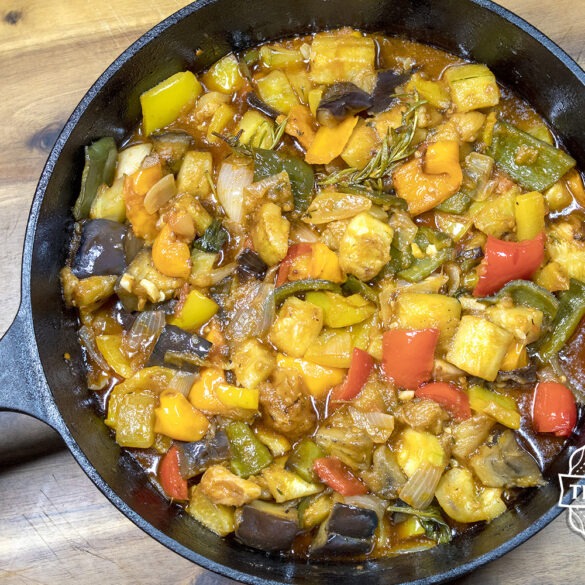
Ingredients
- 1 medium aubergine (eggplant), unpeeled and diced into 1-inch squares (About 16 oz)
- 12 oz / 2 cup courgetti (zucchini), diced into 1-inch squares (peeled or unpeeled is fine)
- 12 Oz / 2 cup yellow squash, diced into 1-inch squares (peeled or unpeeled is fine)
- 1-2 poblano peppers, seeded and ribs removed, cut into large dice
- 1 cup diced onion
- 3 garlic cloves, peeled and diced
- 1 1/2 cups ripe bell pepper, seeded and ribs removed, cut into large dice (red, yellow and orange are fine.)
- 3/4 cup fresh sweet basil, whole leaves and unpacked (tarragon works as well, but you'll only want to use about a 1/2 tsp of the dry.)
- 2 sprigs of fresh rosemary (1/4 - 1/2 tsp dry)
- 1/2 tbsp fresh thyme (1 tsp dry)
- 6-8 oz good quality black olives, packed in brine or oil
- 2 tbsp tomato paste
- 4 medium tomatoes, skinned and de-seeded. Chop into 1-inch squares (canned whole tomatoes squished with your hands work just fine if fresh are out of season.)
- 1 cup extra virgin olive oil (you may not need all the olive oil.)
- 1/2 cup vegetable stock (chicken stock would be fine too for a non-vegan option.)
- 1/4 cup dry white wine or French vermouth
- Note: In general you will use about 1/2 the total amount herbs when substituting dry versus fresh herbs.
Instructions
Instructions:
- Pre-Heat your oven to 300 degrees F.
- In a shallow skillet, pour 4 tbsp (1/4 cup) of olive oil into a 12-inch skillet and turn the flame on med-high. Once the olive oil starts to ripple, place one layer of eggplant with small gaps between the pieces. Allow to brown on each side and set aside. Eggplant does suck up a good bit of oil when cooking. So you will most likely need to add up to 1/2 cup in small amounts, to fully brown all of your eggplant. The goal is to brown the eggplant to get color and flavor, but it doesn't have to be fully cooked at this stage.
- Add another 4 tbsp and continue to brown both squash and zucchini. Set aside in the same container as the eggplant.
- In a Dutch oven, or other heavy bottom pot, add 3 tbsp oil and allow to heat up. Then add the onions, bell pepper, poblano peppers and allow to cook until onions start to turn translucent.
- Make a well (an empty spot in the center of your pot) and add tomato paste, rosemary and thyme. Allow to cook for 2-3 minutes while mixing into your veggies. Then add tomatoes and allow to cook for another 2-4 minutes. Turn off the stove.
- Add eggplant, squash and zucchini along with basil to the pot along with 1/2 cup of chicken stock, or water. Place the Dutch oven in the middle, center, of your oven and allow to simmer slowly for 45 minutes. Make sure to stir the mixture about halfway through the cooking time.
- Remove from the oven, uncover and remove stem(s) from any herbs you added. Place olives over the top of the ratatouille and allow to come to room temperature. Serve with a cooked egg on top or with a side of pasta. Goes well with a crusty farmhouse bread!
- Ratatouille does use a good bit of oil when cooking. If you think you have added too much don't panic. Simply allow it to cool and the oil will float to the top for easy removal. Don't throw this oil away though! It will keep perfectly fine in the fridge for up to a week and is a lovely addition to other dishes and salads.
Recipes and cooking times differ widely depending on who and when you ask, but the common ingredients include tomato, garlic, onion, courgetti (zucchini), aubergine (eggplant), capsicum (bell pepper), and some combination of leafy green herbs common to the region like marjoram, and basil, or bay leaf and thyme, or a mix of green herbs like “herbs de Provence”.
